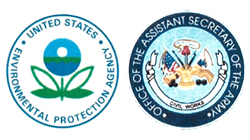 The U.S. Environmental Protection Agency and the U.S. Army finalized the Clean Water Rule that has become known as the Waters of the United States or WOTUS.
The U.S. Environmental Protection Agency and the U.S. Army finalized the Clean Water Rule that has become known as the Waters of the United States or WOTUS.
According to EPA, the rule “ensures that waters protected under the Clean Water Act are more precisely defined and predictably determined, making permitting less costly, easier, and faster for businesses and industry.”
The rule is grounded in law and the latest science, and is shaped by public input. The rule does not create any new permitting requirements for agriculture and maintains all previous exemptions and exclusions.
Outlining specifics, the press release on the action addresses several areas of concern to the agriculture community, including the regulation of ditches. “The rule limits protection to ditches that are constructed out of streams or function like streams and can carry pollution downstream. So ditches that are not constructed in streams and that flow only when it rains are not covered.”
In addition, EPA states that: The rule protects clean water necessary for farming, ranching, and forestry and provides greater clarity and certainty to farmers about coverage of the Clean Water Act. Farms across America depend on clean and reliable water for livestock, crops, and irrigation. The final rule specifically recognizes the vital role that U.S. agriculture serves in providing food, fuel, and fiber at home and around the world. The rule does not create any new permitting requirements for America’s farmers. Activities like planting, harvesting, and moving livestock have long been exempt from Clean Water Act regulation, and the Clean Water Rule preserves those exemptions.
Listen to EPA administrator Gina McCarthy and Assistant Secretary of the Army for Civil Works Jo-Ellen Darcy announced the final rule here: Final WOTUS rule announcement
Response from agricultural organizations so far has been mainly that they need to review the final rule before making comments.
